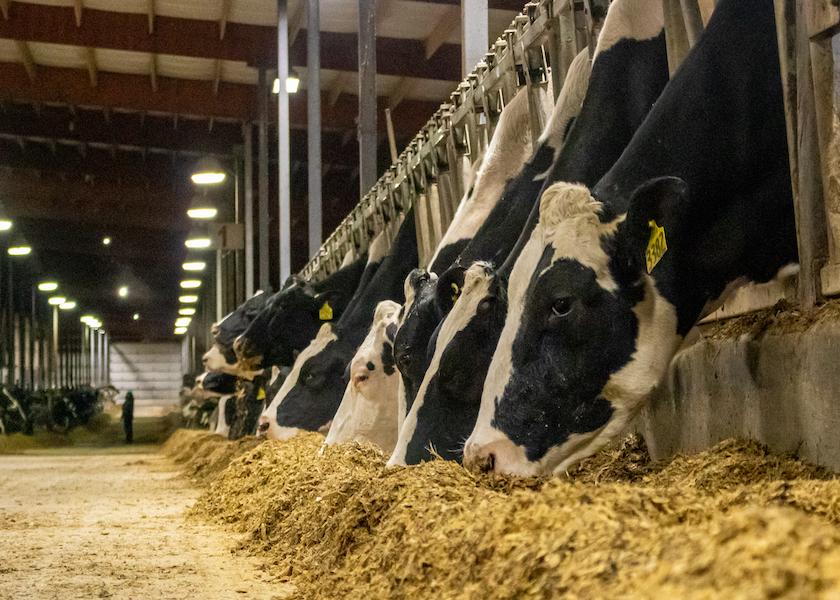Increased Feed Efficiency Leads to a Decreased Carbon Footprint

We in the dairy industry have goal to be carbon neutral by 2050. A 2012 study from the University of Arkansas indicated that for every 1 kg of energy-corrected milk produced, we produce 1.23 kg of carbon. In an updated study, the dairy industry decreased carbon emissions by 19% from 2007 to 2017. As we continue to make progress in the dairy industry, studies have shown that feed efficiency is one of the most critical factors in reducing the dairy industry’s carbon footprint.
One of the more significant contributors to methane production on dairy farms is feed conversion to energy. Methane is a byproduct of microbes in the rumen breaking down and fermenting feedstuffs. The fermentation process allows the cow to convert plant products into energy. Cows that are more feed efficient have less impact on the dairy industry’s carbon footprint.
How is feed efficiency measured?
Feed efficiency is measured by dividing the pounds of dry matter consumed by milk production. In an ideal world, feed efficiency would equal one. Though we can get close, a feed efficiency of one may not be a realistic benchmark. A range between 1.2 and 1.8 would be appropriate depending on a cow’s lactation and days in milk.
How can we increase feed efficiency?
- Increase forage quality
Quality of forages varies more than any other ingredient in the cow's diet. Digestibility of forages has the greatest impact on feed efficiency. Higher quality forages are most digestible and would produce less methane. The 2012 Arkansas study concluded that methane production could vary up to 50% when comparing low-quality and high-quality forage diets.
- Do not forget cow comfort
Maintenance requirements increase when the cow is under stress. Stressors can range from temperature to a dirty environment to overcrowding. More of the energy being put into maintenance means less toward milk production
- Mating for Feed Efficiency
Genetics has been the driving force behind our improvement in efficiency in the dairy industry. We produce more milk now than with 77% less feed than 70 years ago. Many stud companies now have Feed Efficiency as a breeding trait that can be used in mating decisions. Though we may not see the benefits of mating decisions as soon as focusing on providing high-quality forages or comfort, considering breeding for feed efficiency can further help our progress in lowering the dairy industry's carbon footprint.
We have often used feed efficiency to help make ration decisions and benchmark income over feed costs. Focusing on feed efficiency can impact our farms’ profitability and be a way to benchmark our future goal of being carbon neutral by 2050.







